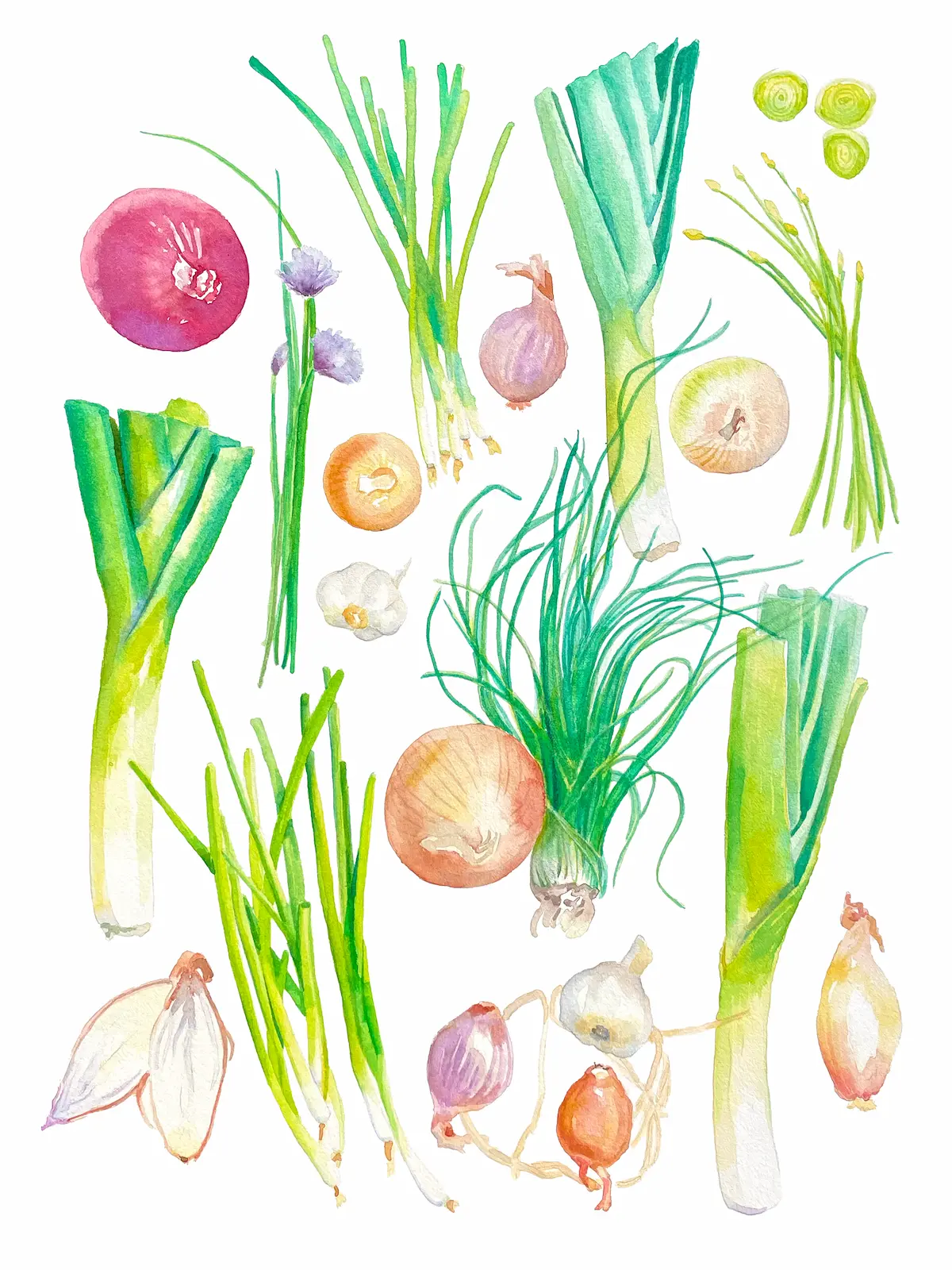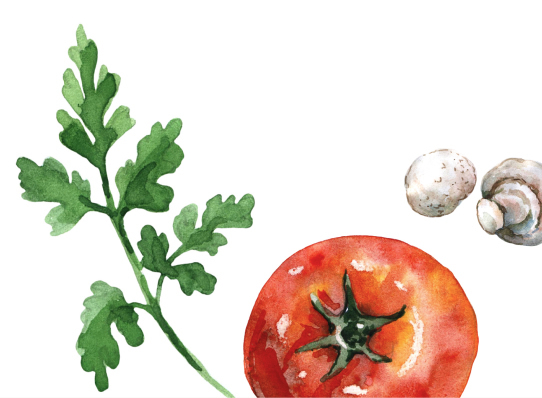GP Chefs’ Holiday Choir

CHEFS' HOLIDAY CHOIR
By Great Performances Chefs
For our 2021 holiday card, we invited our chefs to share their voices with us. This video captures their passion for memorable holiday dishes and cooking. They sing to us, our culinary choir! Their inspiration, recipes, are included below!
Georgette Farkas - Culinary Ambassador
Tarte TatinIn my childhood I recall my father would judge a French bistro by the quality of its tarte tatin. Years later while filming a TV cooking series on location in France, I happened to visit the Loire Valley Hotel in Lamotte Beuvron where the tarte is said to have originated. It ahs since become my favorite fall and winter season dessert.
This is rustic French comfort food in the form of a tart baked upside down and then inverted just before serving. It is essential to bake the tart until the apples are deeply caramelized and ready to melt in your mouth, yet still hold their shape. Honey crisp apples are the best, but Galas will do in a pinch. I bake my Tatin in a cast iron skillet, but just about any oven proof baking dish will do. Pâte Brisée makes for the ideal crust. Serve the tarte warm. Crème fraîche on the side is a non-negotiable must. Ingredients
Fully baked tart can be held un-inverted in its skillet until just before serving. If you have made the tart ahead, be sure to warm it before serving. Pâte Brisée (pastry crust) Ingredients
Procedure
Caramel Sauce Ingredients
Procedure In a high sided saucepan over medium heat, cook sugar and water until they reach a deep caramel color. Deglaze with cream. Add ½ teaspoon salt. Spread caramel sauce over the tart just before serving. Chef Georgette’s Tips:
|
Rodrigo Cando - Sous Chef
Butternut Squash Stuffing
Roast the butternut squash till just cooked and toast the bread until golden. Combine all ingredients and add chicken stock, mixing till just combined (do not overmix). Bake in oven for 30-35 minutes till heated through and the egg is cooked (internal temperature of 165°F). |
Chris Harkness - Vice President of Food and Beverage
Pan Seared Scallops with Blood Orange and Radish SaladI made this dish for my daughter in the early 2000s. I always tried to make different dishes each year, but this one was on her list of cannot change. Scallops
Season the scallops with salt and pepper. Add the scallops to the pan, cook until there is a good even caramelization on one side, turn over the scallops in the pan and turn off the flame. Radish Salad
Arrange the Oranges on a platter, slice the radish in rounds and place on top of the oranges, sprinkle a generous amount of the remaining ingredients and serve with the seared scallops. Chef Chris’ Tips: Leaving the oranges out of the refrigerator so they are not cold is key!! |
Mike Deuel - Executive Chef of Catering Operations
Herring Under Fur Coat
- 2 medium beets
- 2 medium Yukon Gold potatoes, peeled
- 2 medium carrots, peeled and halved crosswise
- 2 large hard-boiled eggs
- 1 cup finely chopped pickled herring
- ¼ cup minced sweet onion
- ¼ cup canola oil
- 2 tablespoons chopped dill, plus sprigs for garnish
- ½ cup mayonnaise
- Kosher salt
Directions
- Preheat the oven to 450°. Wrap the beets in foil and roast for about 1 hour, until tender. Let cool slightly, then peel.
- Meanwhile, in a saucepan, cover the potatoes and carrots with at least 2 inches of water and boil until tender, about 15 minutes for the carrots and 20 minutes for the potatoes. Let cool to room temperature. Grate the potatoes on the medium holes of a box grater and transfer to a small bowl. Repeat with the carrots and beets, keeping the vegetables in separate bowls.
- Halve the eggs. Push the egg whites through a fine sieve into a small bowl. Clean the sieve, then push the yolks through into another small bowl.
- In another bowl, mix the herring with the onion, oil and chopped dill.
- In a small bowl, mix the mayonnaise with 2 tablespoons of the grated beets.
- Place a 4-inch round ring mold in the center of a serving plate. Using the back of a spoon, spread one-fourth of the grated potatoes inside the mold in an even layer. Season with salt. Spread one-fourth of the herring mixture on top in an even layer. Repeat the layering with one-fourth each of the carrots and beets. Season with salt. Spread 2 tablespoons of the beet mayonnaise on top. Garnish with some of the sieved egg whites, sieved egg yolks and dill sprigs. Carefully remove the ring mold and wipe it clean. Repeat to form 3 more molded salads.
Chef Mike’s Tips:
The cooked vegetables can be refrigerated overnight.
Joe Bachman - Venue Chef, Wollman Rink
Butternut & Goat Cheese Gratin with Toasted Pecans
Growing up my mother would always make the traditional holiday sides like green beans, sweet potato and marshmallow casserole and my father would always handle the meat side of the dinner, usually baked lobster tail and chorizo and corn bread clam stuffing. They were never very adventurous eaters and would repeat the same exact meal year after year. After I started my cooking career and develop my cooking knowledge and palette I slowly started to introduce new things into their arsenal. This dish I made years ago when I was still in culinary school for the Holidays as an attempt to get my mother to try goat cheese. It was a hit and now she makes it herself every holiday.
Ingredients
- 3 butternut squash
- 2 sweet potatoes
- ¼ lb butter, small dice
- 2 c whole milk
- ½ tsp cayenne pepper
- 1 ½ c pecan halves
- 2 tsp espelette peppers
- ½ c chives, sliced
- 1 c crumbled goat cheese
Procedure
- Cut butternut Squash in half, scoop out seeds and place flesh side down on an oiled Sheet pan and place in a 350 degree oven for 25 min or until they can be easily pierced with a knife.
- Salt sweet potatoes and place in 350 degree oven with skin on and roast whole until soft enough to easily pierce with a knife.
- While the squash is cooking heat the milk in a pan then then set aside.
- Once the butternut and sweet potato are done cooking. Remove from the oven and scoop out the flesh from the skins of both into a bowl then add the cayenne, 1/4 C. of goat cheese, milk , and butter and whip with a whisk until smooth. Season with salt to taste, then transfer the mixture to a pan or cast iron skillet to bake.
- Top the mixture with the remaining crumbled goat cheese, pecans and espelette pepper then place in an oven to bake at 375 degrees until pecans are toasted and top starts to brown. Approximately 12-15 minutes.
- Sprinkle the cut chives and enjoy!!!
Chef Joe’s Tips:
- When whipping the mixture , a Kitchen Aide works best but a simple whisk will also work.
- Small dice the cold butter and add in batches while whisking for best texture.
- Be careful not to cook the topping too long as the goat cheese will dry out.
Tatiana Iglesias - Venue Chef
Turkey Porchetta
8 Servings
Ingredients
- 1 teaspoon fennel seeds
- ½ teaspoon crushed red pepper flakes
- 1 tablespoon kosher salt
- 2 tablespoons olive oil
- 2 ounces pancetta (Italian bacon), chopped
- 4 garlic cloves
- 3 sage leaves
- ½ cup parsley leaves
- ¼ cup coarsely chopped fresh chives
- 1 teaspoon finely chopped fresh rosemary
- 2 teaspoons finely grated lemon zest
- 1 whole skin-on, bone-in turkey breast, bones removed
- 12 slices bacon
Special Equipment
- A spice mill or a mortar and pestle
Procedure
- Grind fennel seeds and red pepper flakes in a spice mill or with a mortar and pestle until very fine. Toss spice mixture and salt in a small bowl; set aside.
- Heat oil in a small skillet over medium. Cook pancetta, stirring often, until brown and crisp, 5-8 minutes. Let cool. Transfer pancetta and fat in skillet to a food processor, add garlic, and process to a smooth paste. Add sage, parsley, chives, rosemary, and lemon zest and process until smooth; set paste aside.
- Pat turkey breast dry and place skin side down on a large rimmed baking sheet so thickest part of breast is closest to you. Run your fingers underneath fillets lengthwise to detach. Next, you’re going to butterfly each side of the breast so that the meat is of uniform thickness. Starting on one side and using a thin, sharp blade, position knife about 3″ from neck end (the widest part of the breast) and cut downward into the thickest part of the flesh at a 45° (do not cut all the way through. Open top flap you’ve just created like a book. Fold the fillets you removed at the beginning in half and place in the top and bottom V-shaped gaps between the breasts. The idea is to create a layer of meat of uniform thickness across the entire breast.
- Sprinkle reserved spice mixture all over turkey flesh; rub into crevices. Rub paste all over flesh of turkey to coat evenly, working into crevices. Roll up turkey breast like a jelly roll to form a log; position seam side down and tuck skin under at each end. Loop a length of string around outside edge and tie closed. Starting at center, tie with kitchen twine at even intervals (apply some pressure with string so turkey holds a nice round shape, but don’t tie too tightly or it will bulge when cooked).
- Let rolled turkey sit 2 hours to bring to room temperature.
- Preheat oven to 325°. Roast turkey on baking sheet until skin is golden and starting to crisp, 40-45 minutes. Remove from oven and carefully remove strings with kitchen shears. Drape with bacon slices, overlapping; tuck ends underneath turkey to secure. Roast until an instant-read thermometer inserted into the thickest part registers 140°, 30-40 minutes.
- Increase oven temperature to 400° and cook until bacon is browned and crisp and thermometer registers 150°, 5-10 minutes longer. Transfer to a platter and let rest at least 40 minutes before slicing. Serve with pan juices.
Chef Tatiana’s Tips:
Do Ahead: Turkey breast can be rolled 1 day ahead. Chill uncovered on a rimmed baking sheet.
Frank McConnell - Sous Chef, Rockefeller University
Crown Roast of Pork
Ingredients
- 1 8 to 9 pound crown roast of pork (14 to 22 ribs depending on how meaty the ribs) frenched and prepped by butter
- 1 tablespoon chopped fresh thyme
- 1 tablespoon chopped fresh sage
- 2 teaspoons kosher salt
- 1/4 teaspoon freshly ground black pepper
- 1 cup water
Procedure
- Preheat the oven to 350 degrees
- Roast the pork at 350 degrees on the middle rack of oven for 2 to 2 1/2 hours
Andrew Smith - Culinary Director
Stuffed Kabocha Squash Salad
Instructions
Pre heat oven to 300 degrees. Cut top of kabocha squash 2.5 inches from the top. Scrape out seeds with a spoon till interior is clean. Season inside squash with salt, olive oil, and whole leaf sage and thyme place on sheet tray. Split spaghetti squash in half length wise. Remove seeds with a spoon the same way as the kabocha squash, season with salt, sage and thyme. Place onto the same sheet as kabocha. Cover whole tray with aluminum foil to prevent squashes from taking on color while cooking. Place into 300-degree oven and cook for 45 minutes to an hour. Check both squashes with the tip of knife to make sure they are cooked through. Remove from oven and set aside to cool. Using a fork rake the spaghetti to separate the flesh from the skin then set aside. slice apples thin and cut into matchsticks. Mix together spaghetti squash, apples, feta cheese, EVOO, lemon juice. Stuff salad inside kabocha and garnish with pumpkin seeds
Richard Brown - Executive Chef, The Plaza Hotel
Rutabaga Sauerkraut
- 3 rutabagas (2.75 lbs.)
- 3 tsp duck fat
- 2 Spanish onions, brunoise
- 6 oz. cider vinegar
- 32 oz. chicken stock
- Sache of juniper berries, caraway seeds, bay leaves, thyme, parsley stems, and black peppercorns
- 2 Tbsp Kosher salt
- 1 tsp honey
Special Equipment
- 1 mandoline
- I small rondeau with a lid (or a pot)
Procedure
Peel the rutabaga and quarter; use the mandoline to julienne the rutabaga; use the blade guard for your own safety. Heat the duck fat in your Rondeau or pot; when it becomes hot, add your onions and turn the flame to medium, sweat the onions for 10 minutes, and add your julienne of rutabaga and continue cooking for 15 minutes. add 1 T spoon of salt; Deglaze with the cider vinegar and honey; let reduce by half. Add the chicken stock and the sachet; bring to a boil; cover and place in the oven. Cook for approximately 1 hr. and check after 30 minutes to make sure there is still liquid present. Your finished product should have liquid and the rutabaga should be al dente. At this point check for seasoning; let it cool; and store in the fridge. Its better if your able to let the Sauerkraut macerate for a day or two.
Happy Holidays!
Aya Mohamed - Chef de Cuisine
Cranberry Sauce
This was my staple to bring to my aunt’s house for Thanksgiving every year since I was a child. It was my responsibility and I took so much pride as a child that I was allowed to contribute to the elaborate dinner we would have and the tradition stuck. Over the years I would be assigned more side dishes, but I always bring my Cranberry Sauce!
Ingredients
- 1 bag cranberries
- 1 tsp orange zest
- ¼ cup orange juice (or juice of 1 orange)
- 6 oz pears, small dice
- ½ cup sugar
- 1 pinch salt
- 1 tsp fresh ginger
- 1 cinnamon stick
- 2 cloves
Procedure
Place all ingredients in a sauce pot and keep on a low simmer for 1-2 hours, stirring every 20 mins until it’s thick and there’s very little liquid left. Remove ginger, cinnamon, and cloves before serving.
Chef Aya’s Tips
This dish is so versatile and you can add red wine if you’d like to spike it. It’s delicious the next day as spread for your biscuits or on your leftover turkey sandwich.
Related Posts
No records found for the
search criteria entered.
-

Exciting Events Around New York: May 2024
Check out live music, film, art and more at our partner venues this month...
-

Exciting Events Around The Bronx: May 2024
Check out community celebrations, outdoor events, and unique experiences in the Bronx this month...
-

April Food Festival: Garlic and Onion Dip
We've partnered with Embrace to celebrate wellness and community this year...








